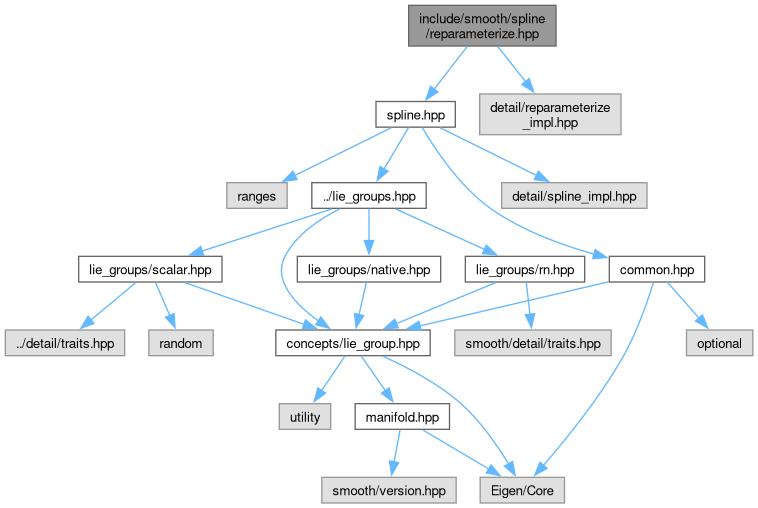Reparamterize a Spline to satisfy derivative constraints. More...
Include dependency graph for reparameterize.hpp:

Go to the source code of this file.
Concepts | |
| concept | SplineLike |
| SplineLike concept. | |
Functions | |
| Spline< 2, double > | reparameterize_spline (const SplineLike auto &spline, const auto &vel_min, const auto &vel_max, const auto &acc_min, const auto &acc_max, const double start_vel=1, const double end_vel=std::numeric_limits< double >::infinity(), const std::size_t N=100) |
| Reparameterize a spline to satisfy velocity and acceleration constraints. | |
Detailed Description
Reparamterize a Spline to satisfy derivative constraints.
Definition in file reparameterize.hpp.
Function Documentation
◆ reparameterize_spline()
| Spline< 2, double > reparameterize_spline | ( | const SplineLike auto & | spline, |
| const auto & | vel_min, | ||
| const auto & | vel_max, | ||
| const auto & | acc_min, | ||
| const auto & | acc_max, | ||
| const double | start_vel = 1, |
||
| const double | end_vel = std::numeric_limits< double >::infinity(), |
||
| const std::size_t | N = 100 |
||
| ) |
Reparameterize a spline to satisfy velocity and acceleration constraints.
If \( x(\cdot) \) is a Spline, then this function generates a function \( s(t) \) s.t. the reparamterized spline \( x(s(t)) \) has body velocity bounded between vel_min and vel_max, and body acceleration bounded between acc_min and acc_max.
- Parameters
-
spline spline \( x(t) \) to reparameterize. vel_min,vel_max velocity bounds, must be s.t. vel_min < 0 < vel_max (component-wise). acc_min,acc_max acceleration bounds, must be s.t. acc_min < 0 < acc_max (component-wise). start_vel target value for \( s'(0) \) (must be non-negative). end_vel target value for \( s'(t_{max}) \) (must be non-negative). N partition size. A larger value implies smaller bound violations.
- Note
- Allocates heap memory.
- For best results the input spline should be twice continously differentiable.
- It may not be feasible to satisfy the target boundary velocities. In those cases the resulting velocities will be lower than the desired values.